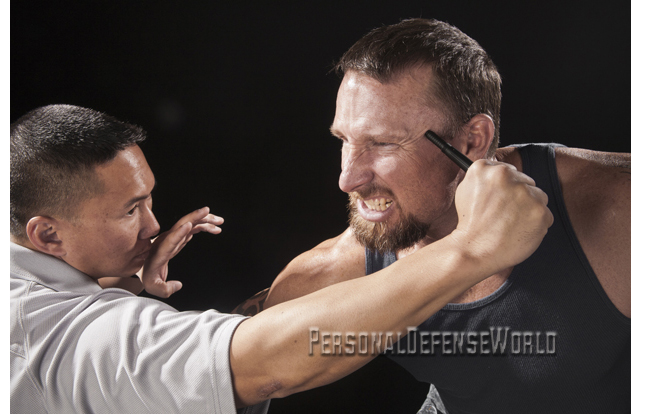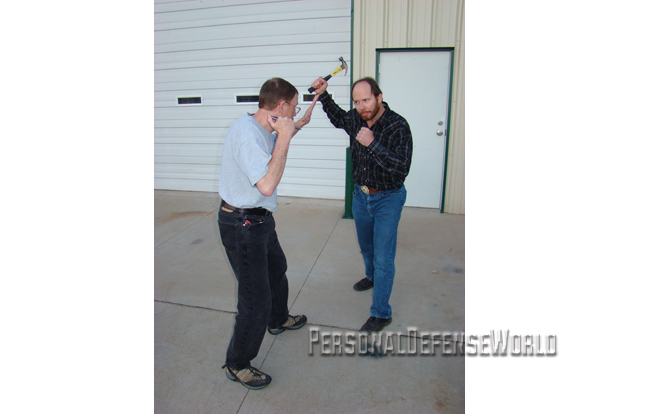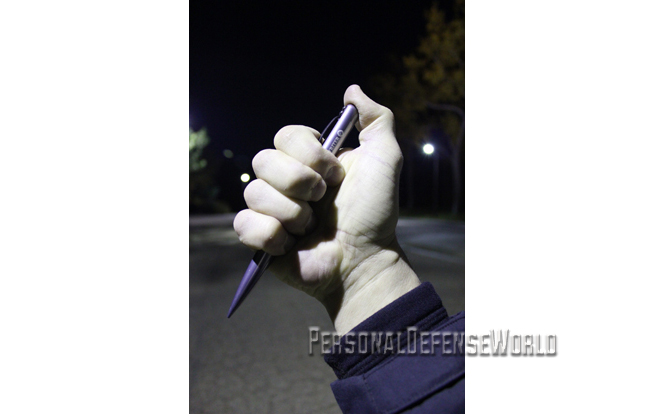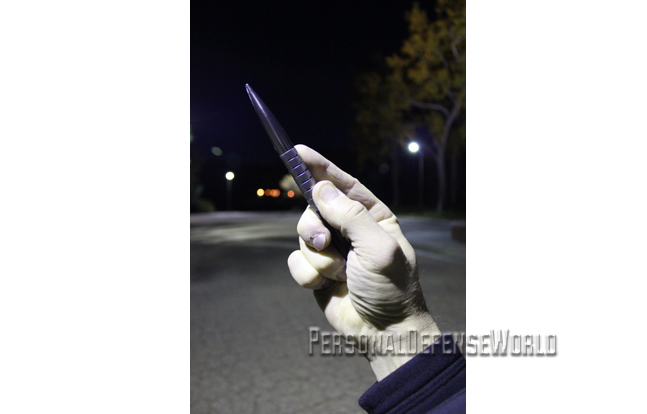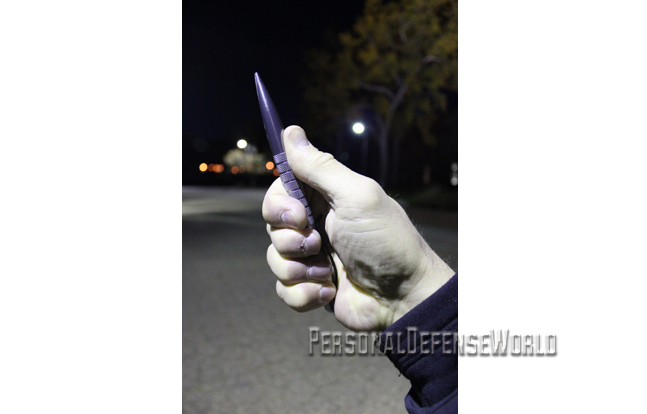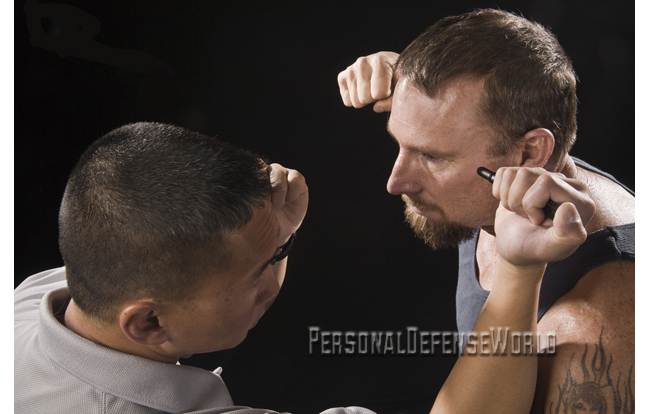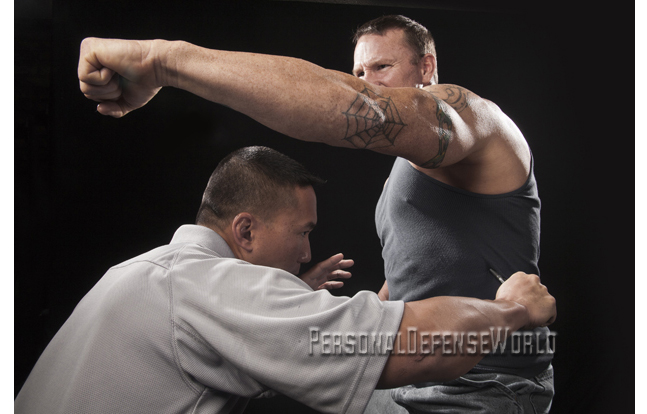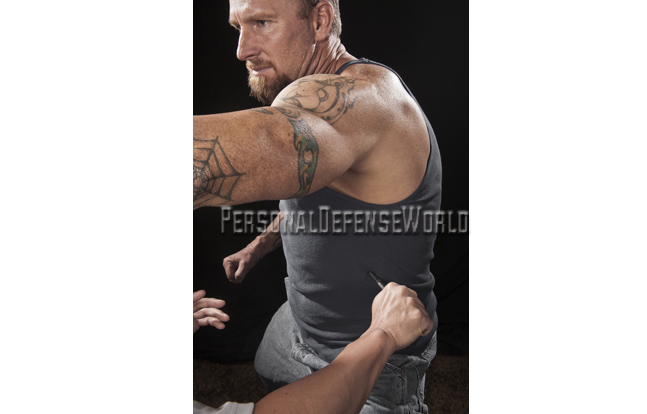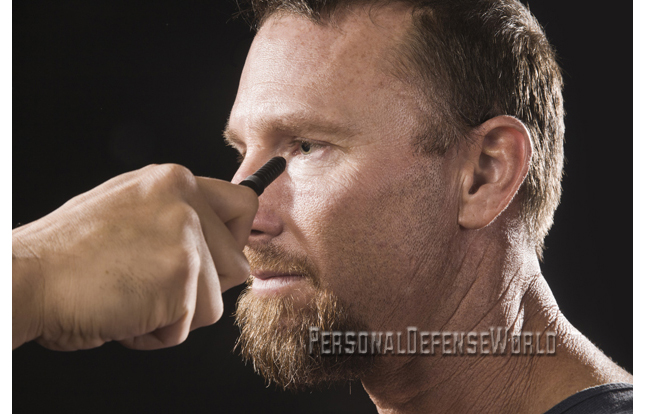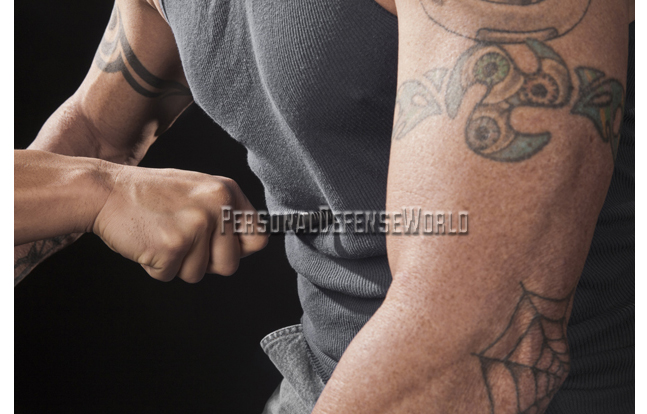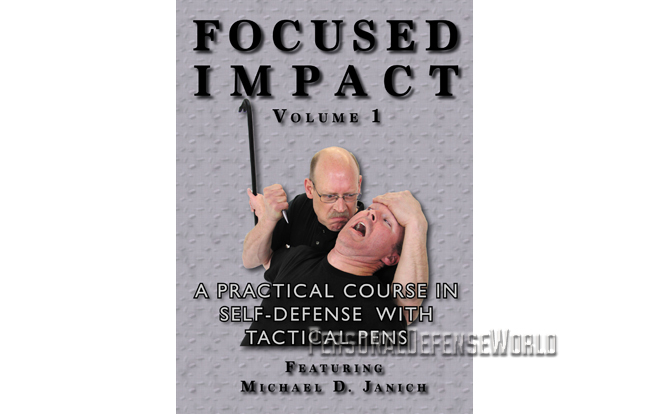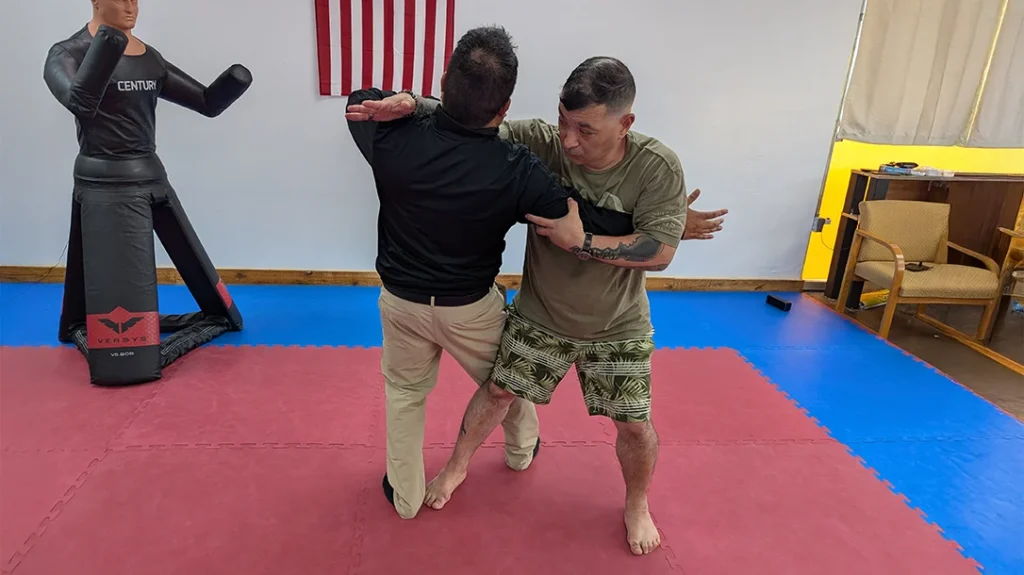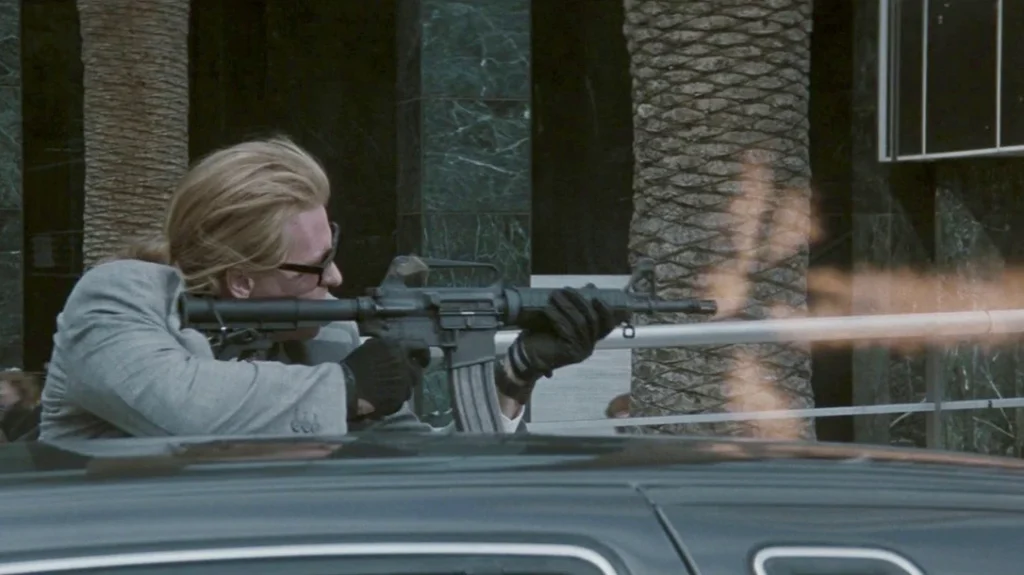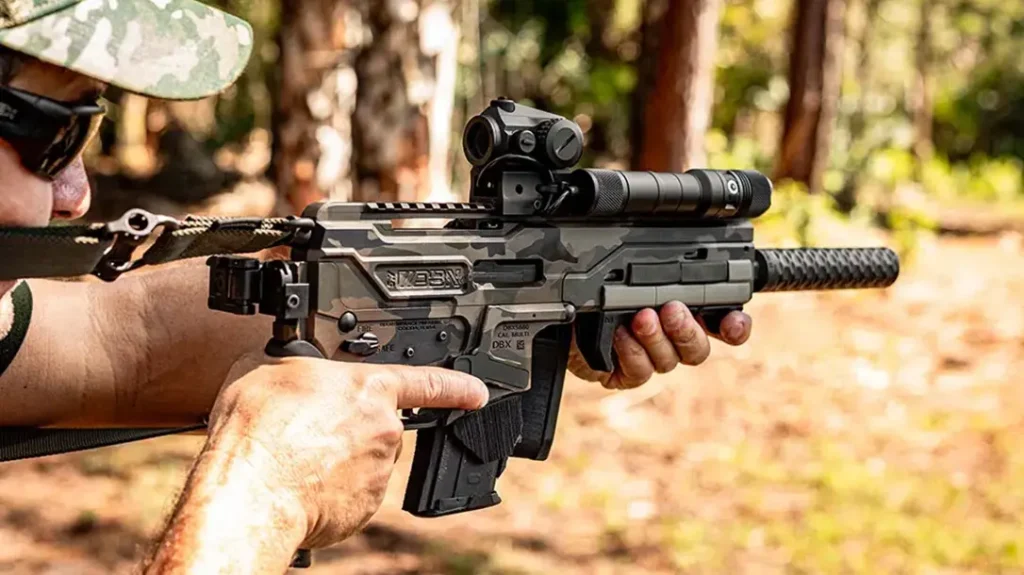What is the perfect self-defense weapon? In today’s world, the answer is complicated.
From a functional standpoint, you want something that is lightweight, easily carried, inexpensive and versatile enough to offer a wide range of force options, including lethal force.
However, from a practical perspective, you also want something that can be carried anywhere without a permit, including non-permissive environments like schools, courthouses and even airplanes. Is there a weapon with all these attributes? Yes: the tactical pen.
Advertisement — Continue Reading Below
The concept of using a pen as an improvised self-defense weapon is nothing new. I’ve been teaching self-defense for more than 30 years and have been recommending high-quality, metal-body pens as personal-defense tools for a long time. And although some off-the-shelf pens have always been well suited to self-defense, it wasn’t until a few years ago that purpose-designed tactical pens became available. In general, these pens are machined from high-quality metals like aircraft-grade aluminum and feature screw-style caps that allow the ends of the pen to be used for focused impact, just like a Kubotan or yawara stick. But unlike a Kubotan, when average people look at a properly designed tactical pen, they see a pen, not a weapon.
Pen Picking
What constitutes a properly designed tactical pen? First and foremost, it must be well designed and made of quality materials that will withstand the rigors of full-power impact. It must also provide a secure grip devoid of sharp edges and “hot spots” that could cause injury to your own hand when it is used to strike.
To effectively manage the impact shock from striking, the pen should be large enough to grip easily and be shaped to allow the top to be capped with the thumb or braced against the palm. This transfers the force of the strike safely into the hand to avoid injury and to maximize striking power.
Advertisement — Continue Reading Below
Also a clip is necessary to support convenient carry and allow quick, immediate access (a drawstroke). Finally, a good tactical pen should not be so overtly weaponized that it attracts undue attention. One of its greatest qualities is its ability to “fly below the radar.” Several years ago I traveled to a trade show in Germany with the editor of a knife magazine. We both had tactical pens in our carry-on kits, but his was much more overtly weaponized than mine, featuring a sharp point and pronounced ridges. Although we went through airport security only seconds apart, he was detained and questioned while I skated right through.
Get A Grip!
As is the case with any other personal-defense tool, just having a tactical pen does not mean you’re prepared to defend yourself with it—it does not ward off evil spirits. If you want to have the ability to use it effectively, you need to train with it. And the first step in that training is learning how to grip the pen properly so you can strike accurately, with maximum force and without injuring your own hand. I teach three basic grips: the reverse grip, the standard grip and the index-finger grip.
Reverse Grip: This is the most commonly seen tactical pen grip. Also known as the icepick grip, it is assumed by making a fist around the pen so the pointed end extends from the little-finger side of your hand. The cap end should extend slightly above the index-finger side of your hand and should be capped with your thumb to ensure the pen doesn’t slide in your hand on impact. You can also move your thumb down to your fist to use the cap end as an impact surface. The reverse grip allows you to strike with extraordinary power using natural gross-motor skills. And these striking actions translate easily into hooking motions that can be used to redirect and clear an attacker’s limbs to create more opportunities for striking.
Advertisement — Continue Reading Below
Standard Grip: Here you grasp your pen with the pointed end extending from the thumb side of your hand. Extend your thumb along the body of the pen, leaving about an inch of pen exposed beyond your thumb, and make a fist around the body of the pen. The standard grip combines power and accuracy, especially when you use the tip of your thumb as a guide. Your natural coordination enables you to poke accurately with the tip of your thumb, making the pen’s point a natural extension of your hand. This grip works best with underhand- and forehand-thrusting motions, like stabbing with a knife. It is also excellent for defending against close-range grabs from the front, like chokes and bear hugs.
The Index-Finger Grip: This translates the action of poking with your index finger into a fast, accurate strike with the pen’s tip. To assume this grip, brace the cap end of the pen against your palm and extend your index finger along the pen’s body, using your thumb and remaining fingers to hold the pen in place. In this position, simply “poke” with your index finger to guide the tip of the pen to the target. This grip works best when used to target the eyes, throat and other small, sensitive targets that require extreme accuracy and speed. Although less versatile than the other grips because the pen is braced against the palm, it is surprisingly powerful.
Carry & Draw Methods
Carry of a tactical pen is pretty straightforward. Just clip it to your pocket or collar like an ordinary pen so that it’s easily accessible. To draw and employ it quickly under stress, however, you must coordinate your carry position with your preferred fighting grip. For example, if you prefer the reverse grip, carrying the pen high on your body (above your elbows) makes grasping and drawing the pen directly into a reverse grip easier. The standard and index-finger grips work best with carry positions that are low on the body (in pants pockets or on the waistband) because your hand accesses the pen in a natural, fingers-down grip. It is also possible to draw to a reverse grip from a front-pocket carry by hooking your thumb behind the pen and lifting your arm upward. This takes a little more practice but isn’t difficult. The best carry method, however, takes full advantage of the fact that a pen is an innocuous, everyday item. Before you step out in public, put your pen in your hand and keep it there—being “armed” has never been so easy.
Advertisement — Continue Reading Below
Cycling Strikes
So, you have your pen in your hand. What do you do with it? In my opinion, you should do what comes naturally, since that’s what you’ll do instinctively under stress. To gain a sense of just what your natural reactions and motions might be, it helps to see how people instinctively fight with weapons.
In my research on personal protection, I have watched countless videos of people being attacked with weapons. Regardless of ethnicity, culture or experience, people seem to be hard-wired to fight in the same basic ways — especially when using short, pointy, knife-like objects like pens. Under stress, we typically lead with our weak side and use our non-dominant hand to probe, grab and gauge distance before striking with caveman-style overhand or underhand blows with our strong side. For natural right-handers, it’s a repetitive left-right, left-right cyclical action. Renowned close-combat authority Kelly McCann referred to this pattern as “cycling,” so we’ll also do so here.
If you are right-handed and realize that something bad is happening, you’ll want to assume a ready stance with your left foot forward, your left palm in the lead, and your right hand to the rear with the pen in reverse grip. To begin the cycling action, extend your left palm forward without any wind up and touch your intended target. That touch tells your brain exactly where that target is in space. With an elliptical motion of your right hand (as if throwing a ball), strike the target with the point of the pen. Repeat this sequence over and over until you develop a smooth, powerful, elliptical flow with both hands.
Advertisement — Continue Reading Below
Once you understand the mechanics of basic cycling, practice them in a defensive context. For example, if an attacker strikes at you with the right hand, use the extension of your left palm to check, parry or preemptively strike the attacker to keep his or her strike from connecting with you. The best way to do this is to hit the attacker’s face with your open left palm, covering the eyes and turning the head toward the attacker’s right shoulder. Rocking the head backward and turning toward the striking shoulder makes it impossible for the attacker to complete a strike with any power. Done properly, this also covers the attacker’s eyes so he or she never sees your strike with the pen coming. Take advantage of that, and strike with full power at the face, the ears, the collarbone, the sternum or another appropriate target.
If you are unable to preempt the attacker’s strike, use your palm to parry the attacker’s striking hand then follow naturally with a strike with the pen. Against attacks with lethal weapons, you should adjust your targeting accordingly and attack your opponent’s eyes. Continue cycling as necessary until you’ve caused enough damage to create an opportunity to escape. If you’ve landed a few hits and your attacker is still fighting hard, back up your pen strikes with a powerful knee to the groin or low-line kick to the knee or ankle to put the attacker on the ground. These low-line kicks are real fight-stoppers, so use your pen tactics to pave the way for them. Delivered properly, low-line kicks become “mobility kills,” tactics that destroy the attacker’s mobility and allow you the opportunity to escape safely.
The basic cycling action can also be used with the index-finger grip. Again, use your left hand to strike, check, block or grab, creating an opportunity for your pen-armed right hand to strike quickly and accurately. With this grip, the right hand’s motion is more linear and guided by the instinctive poking action of the index finger. Because it emphasizes speed and accuracy over power, this tactic is best used against small, vital targets like the eyes and throat. Cycling in standard grip, while not as versatile as the reverse-grip method, is still very effective. The left hand does the same job, while the right hand stabs with underhand and forehand strikes targeting the groin, solar plexus, ribs and armpits.
Advertisement — Continue Reading Below
With sound tactics and minimal training, the tactical pen can be a potent “go anywhere” personal-defense weapon. It also makes an ideal immediate-response tool to pave the way for the introduction of a more potent weapon. Make it part of your personal-defense strategy. You’ll be glad you did.
BUY NOW! AT www.personaldefenseworld.com/magazines/personal-home-defense/.
